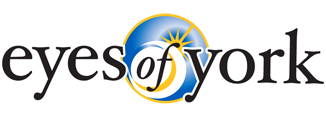What is a Cataract?
A cataract is the clouding that develops in the eye’s crystalline lens. As the leading cause of vision loss among adults age 60 or older, cataracts impair vision, making everyday activities increasingly difficult.
What Causes a Cataract?
The most common factor for developing a cataract is age. Other contributing factors may include increased exposure to sunlight, diabetes, ocular inflammation, ocular trauma and family history. Certain medications can also promote cataract formation.
Are Cataracts Found Only in Older People?
Nearly 22 million Americans age 40 and older are affected by cataracts and by age 80 over half of the population has at least one cataract. Cataracts can also occur at earlier stages in life due to diabetes, long-term steroid use, or trauma to the eye. Children and adolescents can also acquire cataracts during fetal development due to hereditary factors or infectious diseases present during pregnancy.
What are the Symptoms?
Cataracts may cause a decrease in vision, glare or poor night vision. Some people experience double vision or muted colors. Patients may not notice a cataract has formed, as a cataract typically forms in one eye first and the other eye compensates for any visual loss. It can take anywhere from a few months to several years for a cataract to fully develop.
What is “No-Stitch” Cataract Surgery?
Using only topical anesthetics, standard cataract surgery is performed with an advanced procedure called phacoemulsification. This involves dissolving and removing the cataract using a delicate ultrasonic technique through a small microscopic corneal incision. Once the cataract is removed, a small foldable intraocular lens is placed where the cataract once was located. Since the micro-incision is self-healing, no stitches are typically required.
Dr. Benz and Dr. LaCroce have extensive experience delivering outstanding cataract surgery results with each surgeon performing thousands of modern “no-stitch” procedures to date.
Is Cataract Surgery Effective?
Yes! Many patients report vision that is even better than before they developed cataracts. Modern cataract surgery is considered one of the most effective medical procedures used today.
Over time, the lens implant can develop a "film" behind it, which can again cause symptoms of blurred vision. A simple laser capsulotomy procedure can be performed to create an opening in the film in order to restore normal vision. Laser capsulotomy does not require going to the operating room nor does it involve any incision into the eye. It only takes a few minutes and is painless.
Is Cataract Surgery Serious?
Although all surgical procedures are serious, cataract surgery is the most commonly performed surgery in the United States. Our surgeons have extensive surgical experience having completed more than 25,000 ocular surgeries throughout their careers. Even though the procedure only takes 10 minutes, Eyes of York follows strict protocols to ensure patients are healthy enough to undergo surgery safely.
When Should Cataract Surgery Be Done?
Because cataracts have a different rate of progression in each patient, surgical necessity will vary for each individual. Surgery can be recommended by your surgeon when cataracts begin to impact your daily lifestyle. It is important to inform your doctor when you begin to experience a decrease in vision or increased difficulties when performing activities such as driving, reading, or watching television.
Where is Cataract Surgery Performed?
Your cataract procedure is performed on an outpatient basis and takes less than 10 minutes. In most cases patients can resume daily activities such as driving or reading, almost immediately.
What Can I Expect After Cataract Surgery?
Cataract surgery will restore the vision a patient had prior to developing the cataract. Discoloration, cloudiness, and glare are usually caused by cataract obstruction and will be relieved with surgery. The result of cataract removal is a clear window of vision allowing all light to pass through the eye. Standard lens replacement will result in the necessity of full time glasses, although premium options offered at Eyes of York can be discussed with your surgeon to eliminate or reduce dependence on corrective lenses.
How Long Does it Take to Heal?
Each individual’s healing time varies based on their overall health and ocular condition. Some patients experience a slight foreign body sensation the day of surgery. Blurred vision is expected during the healing process and typically clears within a day or two. Eye drops are given as part of your postoperative care regimen and facilitate the healing process.
Does Insurance Cover Cataract Surgery?
Yes. Medicare and most insurance plans cover approved cataract surgeries. There is an additional charge for advanced technology lenses and laser surgery. Our staff will review all of this information with you.





